The spectacular rise of members of the Indian diaspora to dizzying heights in business, politics, the academia and other vocations and professions abroad, even as upward socio-economic mobility in 21st century India remains an arduous climb, raises the question: why do Indians succeed and thrive the world over, except in their own country , writes Dilip Thakore

A curious phenomenon draining and debilitating the Indian economy is somewhat belatedly receiving media, even if not official, attention — the continuous talent and enterprise drain from the country. According to the International Migration Report 2023 published by OECD which attracted front page headlines in the Times of India (October 24), contemporary India is the world’s largest exporter of HNWI (high net worth individuals) and skilled professionals to English-speaking OECD countries. Between 2021 and this year, 3.61 lakh citizens emigrated abroad.
Nor is this a recent phenomenon. For the past seven decades after India under the leadership of Mahatma Gandhi wrested political freedom from nearly two centuries of exploitative British rule, when free citizens should have awoken to a new invigorating dawn of freedom, there’s been a steady exodus of talent and human resource from India which has been ignored — even celebrated — by the increasingly discredited media.
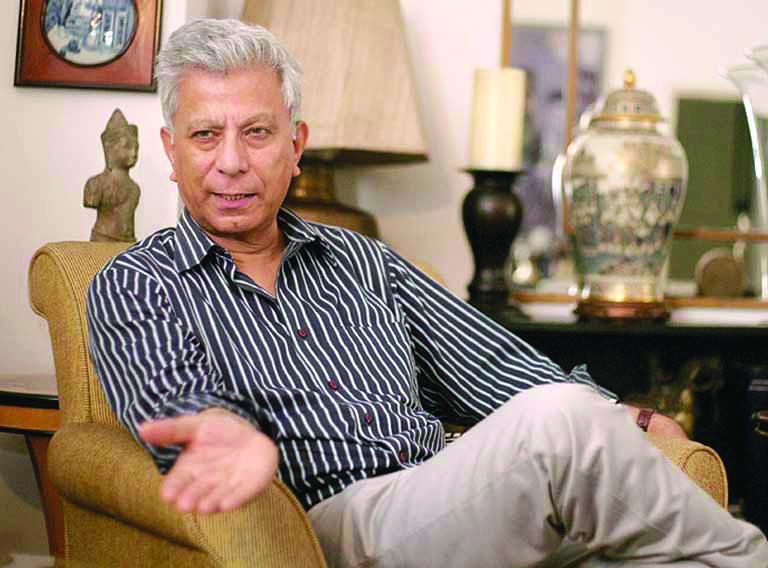
Dipankar Gupta: internal migration analogy
As a result, the Indian diaspora around the world has grown to an estimated 32 million. And denied opportunities at home, its members have risen to prominent apex positions in politics, business and academia in the Western world, including imperial Great Britain which during its oppressive rule over the Indian subcontinent, drained its wealth to accumulate the seed capital that fired the Industrial Revolution of Britain and the West.
The spectacular rise of members of the Indian diaspora to dizzying heights in business, politics, the academy and several other vocations and professions abroad, even as upward socio-economic mobility in 21st century India remains an arduous climb, if not an impossibility for the vast majority of the native population, raises the question: why do Indians succeed and thrive the world over, except in their own country?
To be sure, there isn’t a shortage of supra-nationalists who will dispute the validity of this question. They will highlight the growth of GDP from $40 billion in 1947 to $3.7 trillion currently; increase in the average lifespan of citizens from 31 to 71 years; increase in annual per capita income from Rs.40,000 to Rs.172,000; success of the Green Revolution; rise in adult literacy from 16 percent in 1947 to 74 percent; exponential increase in number of college graduates, and perhaps the success of the Chandrayaan-3 moon mission.
 Yet the flaw of establishment spokespersons and supra-nationalists is that they measure progress in terms of where we were to where we have reached today. Although commonplace, this is an erroneous measurement metric. The correct, more meaningful metric is to make international comparisons, especially with the People’s Republic of China, which has a comparable land area and population. Viewed from a global lens, independent India’s wealth creation and socio-economic development record has been snail-paced.
Yet the flaw of establishment spokespersons and supra-nationalists is that they measure progress in terms of where we were to where we have reached today. Although commonplace, this is an erroneous measurement metric. The correct, more meaningful metric is to make international comparisons, especially with the People’s Republic of China, which has a comparable land area and population. Viewed from a global lens, independent India’s wealth creation and socio-economic development record has been snail-paced.
Admittedly, the country’s GDP is the fourth largest in the world, and recently overtook that of our erstwhile masters, Great Britain. Yet it’s pertinent to note that Britain’s population at 67 million is one-twentieth of India’s and less than of Tamil Nadu (72 million) and almost equal to Karnataka (63 million). Unsurprisingly its per capita GDP is $47,200 cf. India’s $2,600.
Although trumpeted as a great success story especially in recent times, viewed objectively, post-independence India’s development track record is dismal. In 1949, on almost all national development metrics, newly independent India was ahead of China which had just emerged from a long war with Japan, and subsequently a civil war between the Kuomintang and Communist Party in which the latter prevailed. On October 1, 1949, Chairman Mao Tse-tung of the Chinese Communist Party famously declared that after two centuries of foreign domination, “China has stood up”.
At that time India had also stood up after expelling the Brits and was in a sweet spot with a fairly well-developed industrial base. In the teeth of opposition from the British Raj, several resilient, pioneer industrialists including G.D. Birla, J.R.D. Tata, Walchand Hirachand, Lala Shri Ram, Kasturbhai Lalbhai, and Ambalal Sarabhai had established large, thriving conglomerates engaged in the manufacture of jute, chemicals, aircraft, shipping, textiles, steel and cement enterprises and were set to overwhelm Asian markets. But at that juncture, notwithstanding its several millennia tradition of private enterprise, the newly independent nation was shunted onto the broad highway of arid socialism.
As a result, India’s pioneer industrialists, many of whom had funded the freedom movement, were transformed overnight into evil, exploitative capitalists, and government tax revenues and public savings were canalised into large, capital-intensive public sector enterprises (PSEs) run by business-illiterate bureaucrats and over-promoted clerks who were never able to deliver anywhere near adequate return on investment. Coterminously, free India’s private sector corporates and business leaders were tied up in a licence-permit-quota regimen designed to prevent their growth and advancement, resulting in loss of excise, income and sales tax revenue to government — which could have funded public education, healthcare and nutrition — on a massive scale.
Consequently, free India’s economy was trapped between a rock and hard place — negligible return on investment in capital-intensive PSEs and stalled private sector growth. As early as the 1960s, lack of opportunities, employment and social upward mobility became difficult for citizens in all sectors of society, prompting steady migration of people from India to destinations overseas. Middle class migrants with education and marketable skills went to the US, UK and Commonwealth countries, while less qualified and unskilled labour mass migrated to Arab-Gulf countries where they were obliged to endure arduous and often humiliating work conditions.
Since then the number of people of Indian origin (PIOs), who were driven to migrate to foreign countries and have risen to high positions in their adopted countries, and especially in the US, UK and Commonwealth, has multiplied manifold (see box p.58). This phenomenon raises the question as to why PIOs are able to succeed outside of their own country, but not in that of their birth and nurturance. Admittedly, the Great Indian Brain Drain has been discussed in academia and the media, but only cursorily, without adequate depth. Because even after liberalisation and deregulation of the economy in 1991 and subsequently, the migration of HNWI and qualified professionals seems to have continued, if not accelerated.
Dr. Dipankar Gupta, former professor of sociology at Jawaharlal Nehru University, Delhi and an insightful op-ed page contributor to the Times of India, views this continuous wealth and talent drain with surprising equanimity. According to him the number of successful emigrants constitute a “small number” of Indians who migrate abroad. Moreover, he compares the brain drain outflow of “better off and more ambitious” individuals with internal migrants who move from rural to urban India to better their livelihood and prospects. “The factors behind internal and external migration are structurally very similar. If India was prosperous and if there were more opportunities to be innovative because of greater spending and attention to R&D, there would be more foreigners hoping to emigrate here and fewer Indians would feel the urge to leave their homes,” says Gupta.
While Dr. Gupta’s analogy is accurate, it begs the question why seven decades after it became self-governing and independent, India is not prosperous and innovative, while China and the tiger economies of South-east Asia which threw off the yoke of foreign rule and/or domination at the same time as India, are racing ahead in terms of per capita incomes, education, health and material well-being of their citizens. And if this is the reason why increasing numbers of India’s HNWI and best professionals — it’s disputable whether their number is small — are attracted to foreign shores, the causes of this swelling exodus need to be squarely confronted and discussed under several heads — political, economic, sociology and education — at some length.

Nehru-Gandhi dynasty prime ministers: disastrous Left lurch
POLITICS & ECONOMY
As alluded above, a monumental mistake made by free India’s first Congress party government was to abandon our millennia-old tradition of private enterprise in which there was clear division between government and business. Governments focused on governance, while business and industry were free to grow and prosper without let and hindrance to enable them to contribute revenue to government treasuries.
Unfortunately in the years immediately after independence, and especially after the assassination of Mahatma Gandhi in 1948 and the death of Sardar Vallabhbhai Patel in 1950, both of whom were sympathetic to private enterprise and acknowledged the role of private industry leaders in funding the freedom movement, the Harrow and Cambridge-educated Jawaharlal Nehru became undisputed leader of the Congress party.
An over-indulged son of rich and famous lawyer Motilal Nehru, president of the Congress party in 1929 who ensured that his son Jawaharlal (29) succeeded him as president of the party, the younger Nehru was a natural sciences Cambridge graduate who knew precious little about economics. What he did know was picked up from the fashionable salons of Bloomsbury Square, London, frequented by trendy upper class Left wing intellectuals — including Nobel laureate Lord Bertrand Russell, the author of several books including The Conquest of Happiness (1930) — who were enamoured with Stalinist Russia (later the Soviet Union of Socialist Republics). Although Russell recanted and became a strident critic of communism after he learned about Stalin’s mass executions and starvation deaths of millions of peasants in the USSR, because of canalisation of rural savings into forced heavy industrialisation, Nehru did not experience any such epiphany.
After the passing of Mahatma Gandhi and Patel shortly after independence, unmindful of the country’s private enterprise tradition, Nehru set about transforming India into a “socialist pattern of society”. India’s pioneer industrialists who had established large and successful conglomerates despite the best efforts of the British Raj, were tied up in red tape and denied all-important licences and permits to grow their businesses.
Instead, faith was reposed in massive public sector enterprises (PSEs) mandated to produce steel, coal, procure and store food grains (Food Corporation of India), run railways and shipping corporations, and airlines. Unsurprisingly, these capital-intensive PSEs proposed to be funded by Soviet-style five-year plans and managed by file-pushing bureaucrats and over-promoted clerks, proved to be a disaster. The return on investment of over 350 major PSEs averaged 1-3 percent for almost three decades even as tax revenue from private sector companies denied growth opportunities, stagnated.
Jawaharlal Nehru’s Left lurch was aggravated by his daughter Indira Nehru-Gandhi — an Oxford University drop out — who nationalised 28 major banks, general insurance companies and for a while the foodgrains trade. As a result for three decades India’s GDP growth rate averaged 3.5 percent per year, even as population growth averaged 2.5 percent, plunging per capita income to among the lowest worldwide. Indira Gandhi who also has the dubious distinction of having imposed the first and only internal Emergency during which fundamental rights were suspended and the press was gagged, was assassinated in 1984 and succeeded by her son Rajiv, who made some feeble attempts to deregulate the dirigiste Indian economy bound up in shackles and red tape.
In 1989, Rajiv Gandhi, who was on the comeback trail after having been voted out of office following the huge Bofors gun imports scandal, was also assassinated and succeeded by P.V. Narasimha Rao. Rao emerged as post-independence India’s first non-socialist prime minister and abolished the industrial licensing system, monopolies legislation and reservation of a large number of consumer products by MSME (medium, small and micro enterprises) companies.
As a result, the Indian economy leapt out of the 3.5 percent per year GDP growth mire and into the 5 percent plus orbit and later to 7 percent under the first BJP government (1999-2004) and prime minister Atal Bihari Vajpayee. However in 2004 the Congress party was unexpectedly returned to power at the Centre in the general elections of 2004 and 2009 and although the 6-7 percent annual rate of GDP growth was maintained, an inevitable and dreadful consequence of imposing inorganic socialism on the citizenry for over half a century became painfully apparent — pernicious corruption, a major cause of secession of the educated middle class from 21st century India.
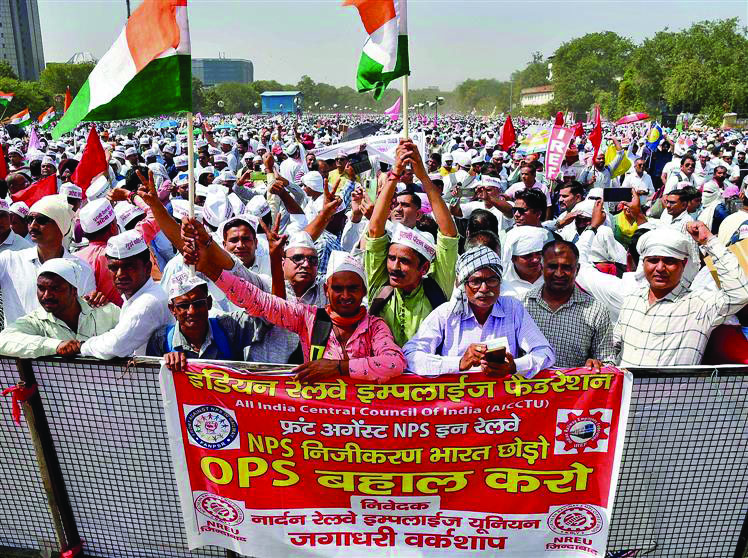
Demanding government servants: notorious corruption reputation
CORRUPTION & LAW AND ORDER
The most debilitating outcome of the imposition of state-led development has been widespread corruption which has struck deep roots within the Indian economy. With Parliament and legislative assemblies passing thousands of mostly discretionary laws, rules and regulations prohibiting and/or regulating business in a nation of natural entrepreneurs, by the early 1970s, India, governed by a 20 million-strong neta-babu brotherhood, acquired a notorious global reputation for public sector corruption with amoral politicians and bureaucrats routinely demanding bribes for every licence, permit and paper.
This stifled enterprise — perhaps the most important (after land, labour and capital) factor of production — and inflow of foreign investment into the Indian economy. Unfortunately, because the neta-babu brotherhood has acquired a vested interest in the licence-permit-quota regimen, the economic reforms of 1991 have not been carried forward to their natural conclusion. Even after the reforms, the Indian economy has failed to attain the 10 percent annual GDP growth rate required to make up for the lost decades between 1947-1991.
Under the BJP which routed Congress in the general election of 2014 and again in 2019, and projected itself as a pro-business and private enterprise party, the annual rate of GDP growth — which slowed to below zero during the harsh pandemic lockdown — has averaged 5-6 percent per year. But like the old man who clambered aboard the shoulders of Sinbad the sailor and refused to get off, the neta-babu brotherhood is reluctant to get off the back of the Indian economy and the liberalisation and deregulation initiative of 1991 has transformed into a two-steps forward, one step back tango. On the World Bank’s Ease of Doing Business global index, India ranked #63 in 2022, way below China (#31). Although the 2022 EODB ranking (since discontinued) is an improvement over #142 in 2014, it isn’t good enough.
A damaging outcome of endemic corruption — on the Berlin-based Transparency International global public sector corruption index India is ranked #85 (cf. China’s #65) — is the near-collapse of the law and order and justice systems, a major but unidentified cause of the brain and talent drain from India. The ratio of civilian police to population at 144:100,000 pales in comparison with 864 in Grenada, 343 in Mexico, 320 in Thailand, 229 in South Korea and 174 in the Philippines, and is way below the UN recommended norm of 222. In this connection it should be noted that 144: 100,000 is the national average. In some states such as Uttar Pradesh, Bihar and West Bengal, the ratio is less than 100. It’s also noteworthy that the majority of India’s police is perceived to be corrupt with only 25 percent of the population reposing trust in the law and order maintenance personnel according to a 2018 survey conducted by the Lokniti team of the Delhi-based Centre for the Study of Developing Societies (CSDS).
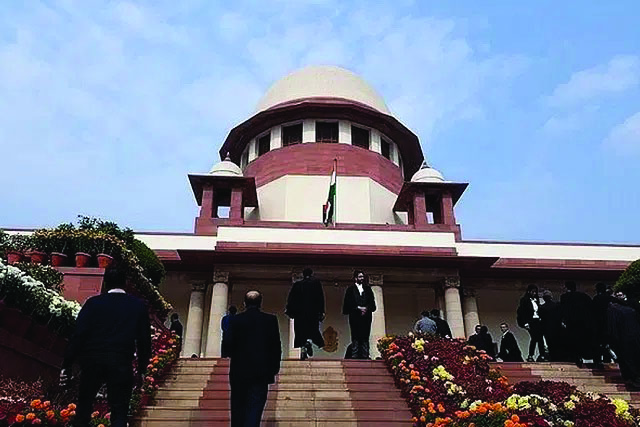
Supreme Court: 56 million cases backlog
In civilized society, the law and order machinery is closely allied with the justice delivery system. Here again more by design than accident, the judicial system has fallen into disrepair. In an editorial written in EducationWorld in August 2020, we highlighted that “India’s ratio of judges to population is perhaps the lowest worldwide — 20 per million people currently. Against this, the ratio of judges per million in the US is 70, China (144), Russia (210) and Lichtenstein (1,837). Deeper examination is required to understand why for over half a century, successive governments at the Centre have failed to make larger provision to expand and improve the judicial system”.
Since then the national judicial backlog has risen to 56 million cases and pendency for final adjudication is 10-15 years for criminal and civil cases, during which under-trials languish for years in prison while substantial court fees are payable on civil suits. On the critical parameter of enforceability of contracts — vital for ease of doing business — India is ranked #163 in a league table of 190 nations. With neither security provided by the archaic, corrupt law and order machinery nor speedy justice, it’s no surprise that high net worth and talented professionals, who are aware of the superior soft infrastructure including better civic governance provided in developed OECD countries, are packing up and leaving in droves, knowing full well they may have to suffer condescension, if not outright racial discrimination, in foreign countries.
PUBLIC EDUCATION & HEALTH
Surprisingly, social scientists, academics and media pundits have paid inadequate attention to the pathetic state of public education in post-independence India. Few have made the connection between poor quality education and the deficiencies of political, socio-economic, law and order systems. Yet a moment’s reflection makes it clear that if the population had been provided acceptable quality primary-secondary public education and health services, the India growth story would have been substantially different.
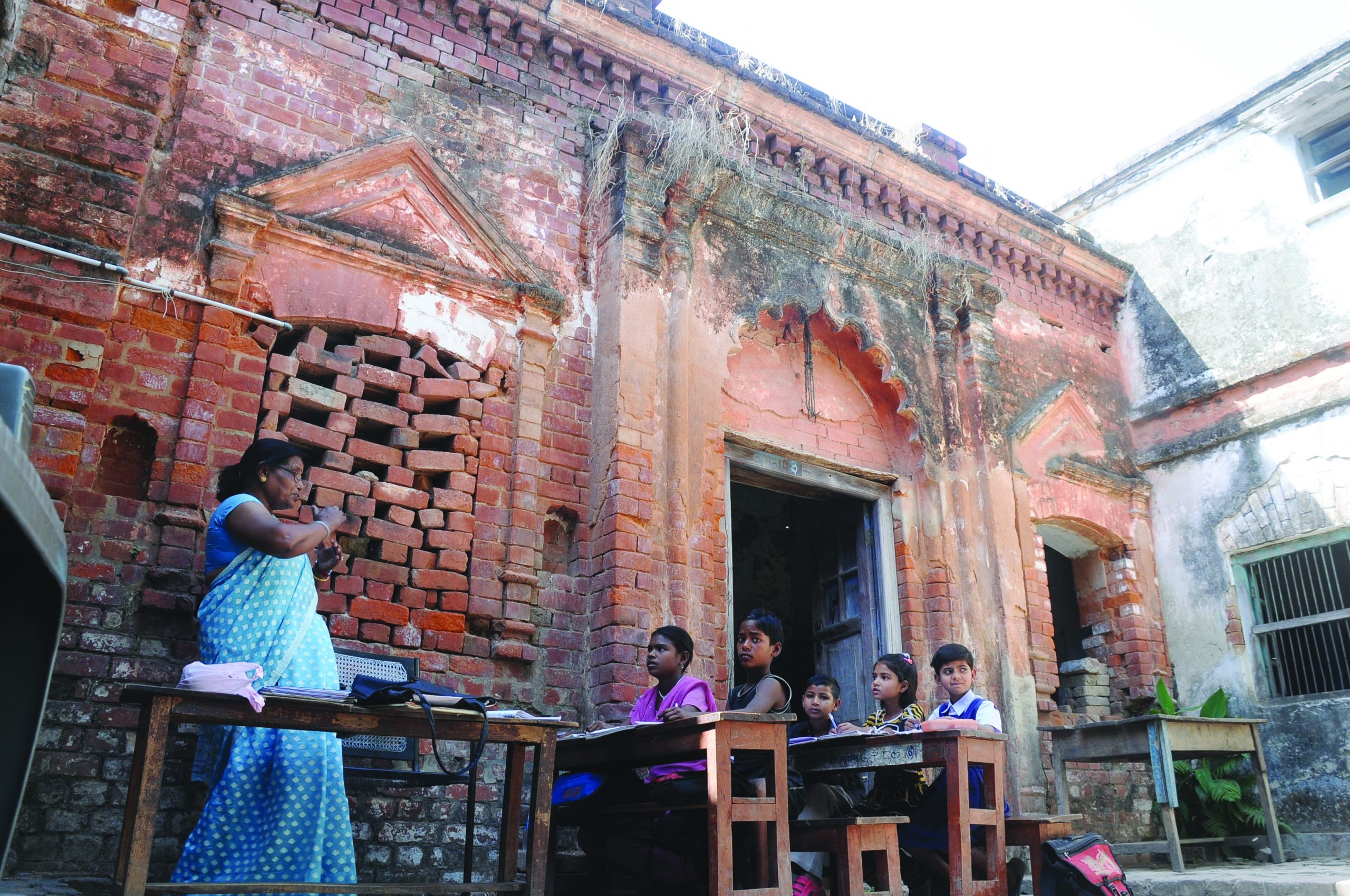
Government school in Uttar Pradesh: grossly inadequate infrastructure
For one, a better educated citizenry would have elected better quality Members of Parliament and MLAs (members of state legislative assemblies) who would have been less susceptible to the anti-industry and business propaganda of professed socialist politicians whose prime interest in perpetuating licence-permit-quota raj is speed money and bribes extraction. Moreover the public would have been able to better articulate demand for superior law and order, justice and governance systems. And thirdly they would have been equipped to insist on incrementally better quality education in the country’s 1.10 million government schools.
As repeatedly reported by the annual ASER ( Annual Status of Education Report) surveys of the independent Pratham Education Foundation, learning outcomes in (rural) government schools are pitiably poor. Over half of children in class VII cannot read simple passages from class III textbooks (in vernacular languages) or manage simple computation sums, with government schools faring worse than budget private schools. Moreover ASER surveys have also routinely highlighted multi-grade classrooms (25 percent (1.5 million) government school teachers are absent every day) and grossly inadequate infrastructure — electricity, drinking water and toilets shortages — in government schools, mostly managed by state governments.
Learning outcomes in the majority of higher education institutions are only marginally better. Only a few dozen of the country’s 42,000 junior and undergraduate colleges provide globally benchmarked undergraduate education. According to a study conducted in 2019 by Aspiring Minds, a Delhi-based recruitment and placements company, 70 percent of engineering college graduates and 80 percent of arts, science and commerce graduates are unemployable in Indian and foreign multinational companies. As a result the in-house training costs of Indian corporates are among the highest worldwide and damage bottom lines and capital formation. IT companies such as TCS, Infosys among others run huge training establishments in several cities to make college/university graduates job-ready.
 The condition of India’s 1,074 universities, some established over 150 years ago, is not much better. Again, only a few dozen managed by the Central government such as the 23 IITs and a dozen IIMs graduate engineers and business managers who are eagerly snapped up by industry. In the latest Times Higher Education league table of the world’s Top 1,000 universities, India’s top-ranked varsity is the Indian Institute of Science, Bengaluru (estb. 1904) ranked in the 251-300 band. Against this neighbouring China has five among the Top 100. And although a dozen globally benchmarked private universities, which have been permitted to set up shop in the new millennium, offer a ray of hope, they demand — and get — market determined tuition and residential fees which is anathema to the Indian middle class accustomed to heavy subsidisation of higher education — at the cost of primary education.
The condition of India’s 1,074 universities, some established over 150 years ago, is not much better. Again, only a few dozen managed by the Central government such as the 23 IITs and a dozen IIMs graduate engineers and business managers who are eagerly snapped up by industry. In the latest Times Higher Education league table of the world’s Top 1,000 universities, India’s top-ranked varsity is the Indian Institute of Science, Bengaluru (estb. 1904) ranked in the 251-300 band. Against this neighbouring China has five among the Top 100. And although a dozen globally benchmarked private universities, which have been permitted to set up shop in the new millennium, offer a ray of hope, they demand — and get — market determined tuition and residential fees which is anathema to the Indian middle class accustomed to heavy subsidisation of higher education — at the cost of primary education.
Therefore the pressure for admission into the much-too-few globally benchmarked undergrad colleges and universities is intense. For instance, it’s well-known that the IIT-JEE (joint entrance exam) is the toughest test worldwide with only 2 percent of the 1.1 million aspirants who write the exam admitted into the heavily-subsidised IITs. Indeed so intense is the competition for admission into the IITs and 56 Central government universities and their affiliated colleges, that this phenomenon has spawned an entire Rs.10,000 crore private tutorials industry that drills and skills school-leavers and graduates to top the IIT-JEE, CAT (for IIMs), Civil Services Exam and NEET (for admission into much-too-few medical colleges).
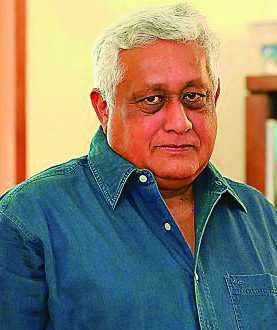
Visvanathan: boredom malaise
The outcome of a lop-sided higher education system defined by a few high-quality institutions floating in a sea of mediocrity is that over 100,000 graduates and increasingly school-leavers, migrate to universities abroad every year. To the extent that India has become the world’s largest exporter of students to universities in the US, UK, Australia, Canada and several other countries worldwide including China. Currently the number of Indian students in higher education institutions abroad aggregates an estimated 1.3 million and their annual expenditure abroad (expected to hit Rs.6.7 lakh crore equivalent) by far exceeds the Union government’s budgeted annual outlay for education (Rs.1.12 lakh crore).
Well-known social scientist Shiv Visvanathan, currently professor and Executive Director, Centre for Study of Knowledge Systems at the new genre O.P. Jindal Global University in Delhi NCR, attributes the mediocratisation of Indian higher education to a loss of appetite for research and innovation and contentment with “competence replication” within the academy which extends to India Inc as well. “Playfulness, story-telling, eccentricity and risk-taking capability that results in great scientific innovations which existed within the academy several decades ago have almost completely disappeared. There is too much obsession with success. Our great institutions such as the Indian Institute of Science and IITs are producing standard Ph Ds. Indian science is dying of boredom. The same is true of Indian industry. It is becoming increasingly bureaucratic and risk-averse. There is little awareness within corporate India that the world’s greatest corporates — Google, Microsoft, Metaverse — were incubated through play in tiny garages,” says Visvanathan.
Unsurprisingly the majority of Indian students who venture abroad for postgraduate study in foreign universities — whose undergrad education in India is highly subsidized by the citizenry — don’t return, and stay on to generate tax revenue, create employment and knowledge for the benefit of their adopted countries. In this connection it’s pertinent to note that the majority of students in India’s higher education institutions are middle class. Neither they nor the establishment acknowledge the iniquity of well-off middle-class students availing highly subsidized undergrad education and taking off for greener pastures abroad.
All suggestions to introduce a regimen requiring IIT and top-ranked university students to repay the actual cost of their education have no takers, presumably because almost all politicians and bureaucrats — including several former presidents and prime ministers — have children parked abroad, a reflection of the faith they repose in their own bankrupt development policies and initiatives. Indeed in the country’s upscale leisure clubs, every second member boasts of one or other progeny residing abroad.
 Curiously instead of lamenting this uninterrupted capital flight and brain drain, the new spin given to this phenomenon is that it should be viewed as a positive development. “According to the World Bank almost 36 percent of the country’s remittance flows are sourced from high-skilled migrants in the US, UK and Singapore. It’s the tech industry that’s absorbing a significant proportion of them, thereby creating a bridge between India and the world in the most dynamic area of economic activity. Its positive spin-offs include investment and transfer of skills back to India through collaborations. The human bridge between India and OECD, which is a proxy for the developed world, is an underestimated source of economic and intellectual dynamism,” intones a lead editorial in the Times of India (October 25).
Curiously instead of lamenting this uninterrupted capital flight and brain drain, the new spin given to this phenomenon is that it should be viewed as a positive development. “According to the World Bank almost 36 percent of the country’s remittance flows are sourced from high-skilled migrants in the US, UK and Singapore. It’s the tech industry that’s absorbing a significant proportion of them, thereby creating a bridge between India and the world in the most dynamic area of economic activity. Its positive spin-offs include investment and transfer of skills back to India through collaborations. The human bridge between India and OECD, which is a proxy for the developed world, is an underestimated source of economic and intellectual dynamism,” intones a lead editorial in the Times of India (October 25).
This argument is typical of post-independence India’s self-centred middle class which prefers to serve in heaven rather than clean up the mess created by India’s socialist misadventure. The percentage of earnings that an emigrant is likely to send back as remittance to the mother country is inevitably a fraction of his post-tax income and would barely cover the cost of his/her subsidized education in India. Reversing the knowledge and know-how drain, requires an organised programme of substantial initial research grants and lab facilities conceptualised for outstanding diaspora scientists and researchers in the West to induce them to return to India, and sustained support thereafter from government and industry. The model of such a detailed programme to lure exceptional diaspora scientists and researchers back home was successfully initiated by China in the new millennium. The success of this programme is behind the awesome research and technical capability that the People’s Republic has built up in the past few decades. It needs to be studied and replicated.
Meanwhile there is no option but to initiate root and branch ideological, governance and education reforms, to stem the outflow of the country’s brightest and best talent from India.
First, it requires unambiguously reviving and encouraging the sub-continent’s native spirit of private enterprise with the State playing the role of facilitator — guide by the side rather than sage on stage. But the neta-babu brotherhood which has become accustomed to lording it over business, commerce and industry, isn’t likely to voluntarily step aside and assume the proposed new role. Yet in both major political parties — BJP and Congress — there are pro business and private enterprise leaders. They need public, especially middle class support. Unfortunately despite the clear failure of India’s Left lurch into inorganic socialism, there’s little support for private enterprise in business and industry within the academy and media. On the contrary addle-headed lefties driven by envy rather than ideology, continue to dominate the public discourse and trash successful businesses and industry.
Nor despite authoring the industry liberalization and deregulation initiative of 1991, has socialism lost its appeal in the Congress party. De facto Congress leader Rahul Gandhi continues to bash big business and the Adani Group in particular, cavalierly unaware that to attain annual double digit GDP growth rates and emerge as a respected super-power in this century, India needs a thousand Adanis and Ambanis. Clearly he is unrepentant about the misery that the Nehru-Gandhi dynasty has heaped on two generations of post-independence India’s citizens. For a nation with a population of 1.5 billion, the handful of dollar billionaires we have are too few in number and even they are under siege from unrepentant socialists who have destroyed the modest material aspirations of millions of midnight’s children, and forced the brightest and best into exile.
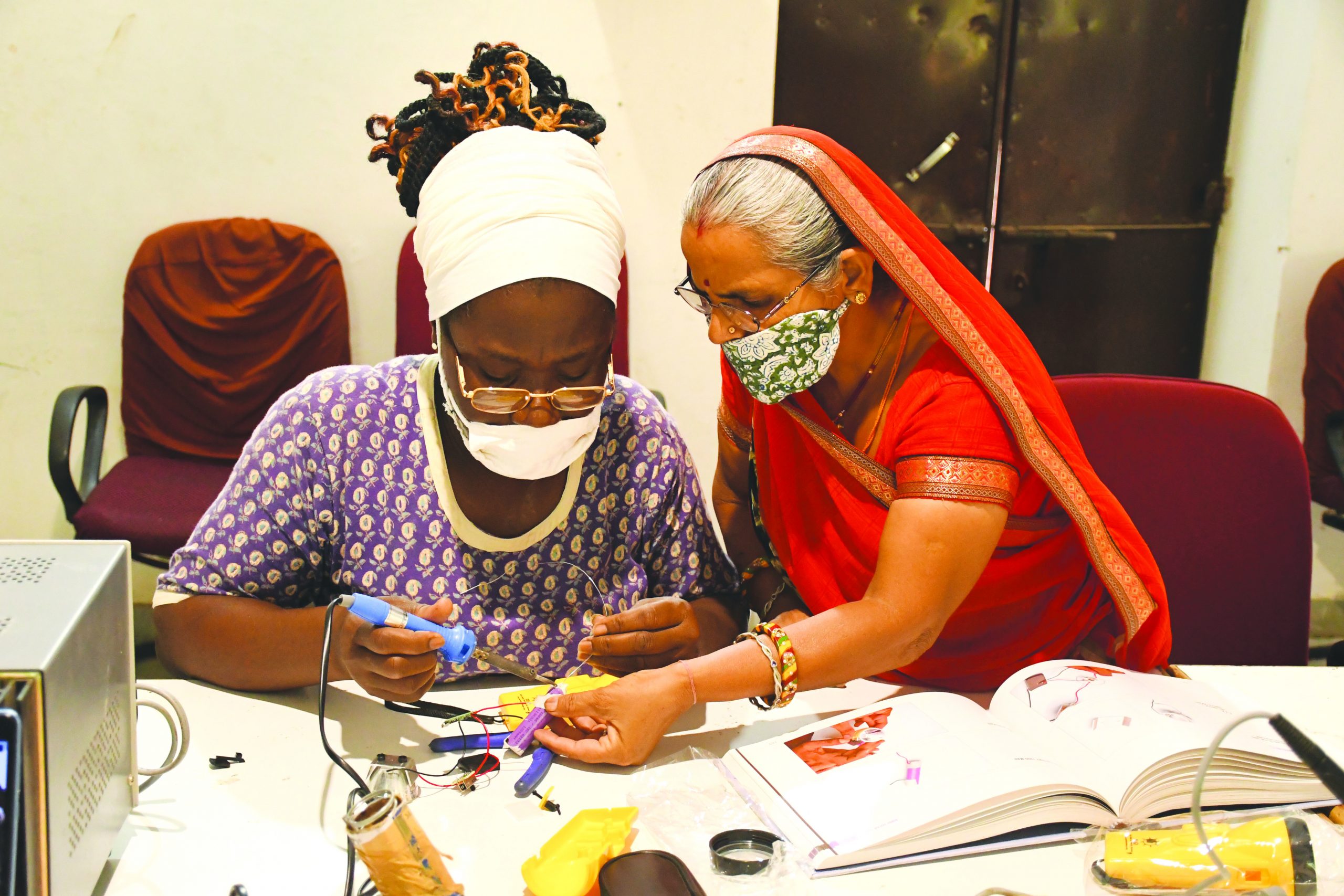
Barefoot College solar engineer (right): living proof of entrepreneurial tradition
Secondly, as advocated above, the middle class — especially the intelligentsia — needs to discover ways and means to eradicate public sector corruption and clean up the law and order machinery and justice delivery system. Several learned studies such as the Justice Malimath Report and the reports of 63 Law Commissions provide prescriptions, but they haven’t received sufficient academy, media and middle-class support. Yet unless these initiatives are taken, capital flight and the brain drain will not stop. Especially since confronted with declining populations of working age youth and adults, in their self-interest OECD countries are rapidly shedding centuries-old racial and colour prejudices and are sweeping up the best entrepreneurs, professionals including academics, doctors, nurses from developing countries.
Although since India’s disastrous Left turn plenty has gone wrong, the abiding sin of the neta-babu brotherhood and establishment was — and continues to be — conspicuous failure to provide anywhere near world-class public education from early childhood to Ph D. It is the firm conviction, indeed an article of faith of this writer based on over 40 years experience in development journalism, that provided modest quality primary-secondary education and our can-do entrepreneurial tradition, he/she is endowed with capability to transform from passive consumer into an active producer of goods and services with savings capability. Barefoot College, Tilonia, Rajasthan (estb.1972) is living proof of this assertion. Yet rare is the politician, bureaucrat or media pundit who has any knowledge of it, despite EducationWorld having written two cover features detailing its out-of-the-box rural development model.
If provided access to primary-secondary education of minimal global standard, India’s 260 million households have capacity to save at least Rs.10,000 per year. This massive capital formation (Rs.2.6 lakh crore) could finance a plethora of infrastructure and social welfare projects. It’s a shame that successive administrations in Delhi and the state capitals — and panoply of the country’s much vaunted economists who routinely grace the boards of IMF and the World Bank — haven’t hit upon this national development strategy and accord mere lip sympathy to the issue of developing the country’s abundant and high-potential human resource.
It’s not that a formula to fund and upgrade the public education system is unknown. For the past decade, coterminously with presentation of the Union Budget, your editors have presented a schema under which the Union government, that year after year makes paltry provision for education equivalent to 0.5 percent of GDP (Rs.227 lakh crore in 2023-24), can mobilise an additional Rs.7 lakh crore for investment in public education. But although this schema (see p.64) has been personally sent to over a dozen business leaders and eminent economists inviting critique, including trashing, not a single response has been received.
The conclusion is inescapable. With their progeny comfortably ensconced in top-ranked private schools and universities, establishment leaders are not alive to the pathetic condition of government schools and higher ed institutions. For India’s unambitious business leaders, the country’s 430 million strong middle class market is sufficiently large within which to do business. They seem unaware of the late Dr. C.K. Prahlad’s seminal book Fortune at the Bottom of the Pyramid (2004) with most content to be big fish in a small domestic pond.
During your editor’s several years as a pioneer business journalist, I often encountered businessmen who deliberately limit the growth of their enterprises after material needs are satisfied. Many did so because they didn’t want to attract the attention of the extortionate neta-babu brotherhood and their obedient “caged parrot” economic offences enforcement institutions (CBI, Income-Tax department, Enforcement Directorate etc). When taxes and jobs generating entrepreneurs and businessmen lack global ambition, the national economy is the loser.
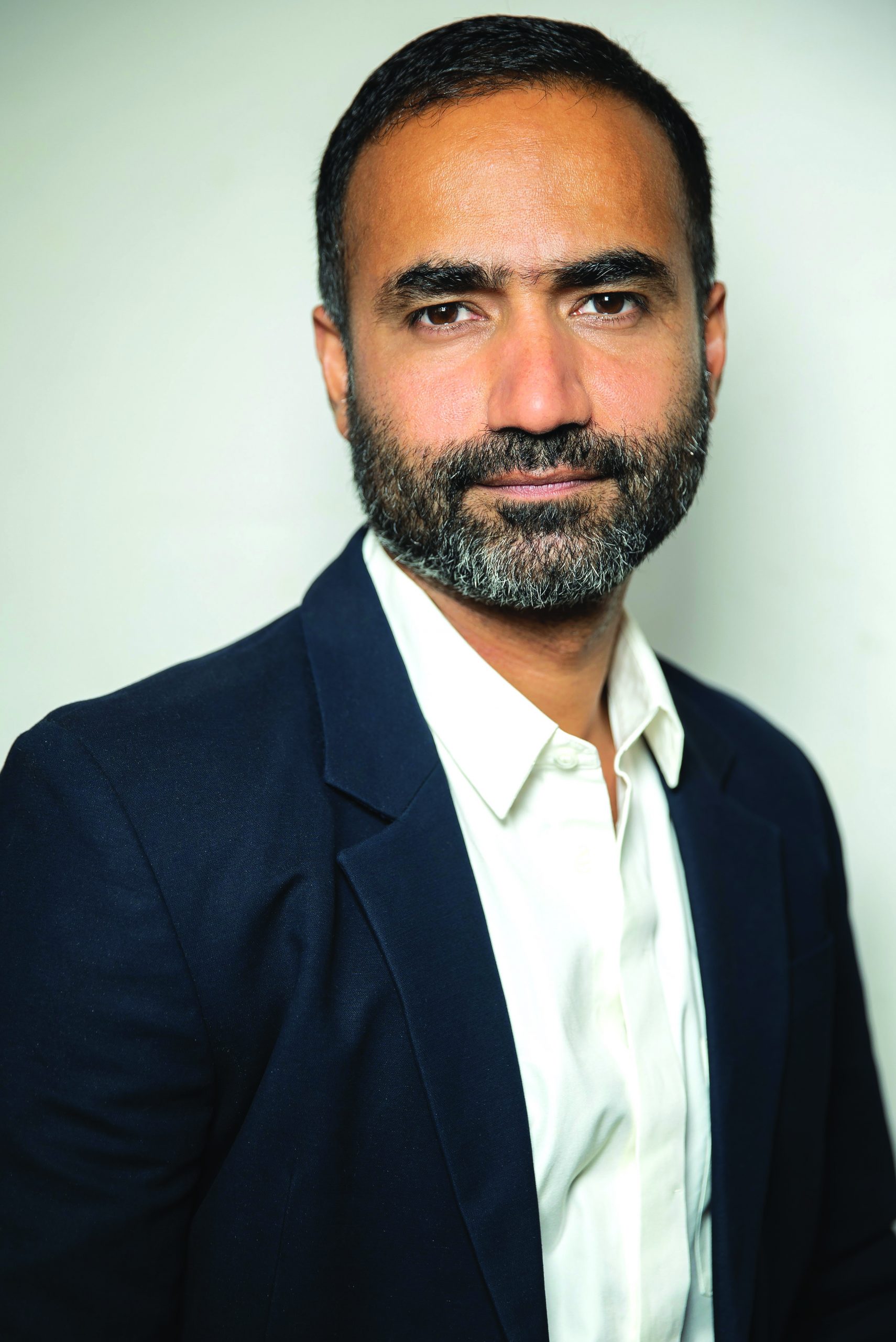
Akhil Behl: most effective catalyst
Fortunately, even if belatedly, the tide is turning. A new generation, more idealistic and less enamoured of the phoren, is becoming increasingly aware of the damage inflicted upon the Indian economy through the continuous emigration of our brightest and best citizens.
“Retaining wealth creators and educated professionals should be one of the highest priorities of government and society. There is no greater drain of wealth than intellectual and human capital which is the foremost driver of economic growth and national development. Major factors driving the brain drain are excessive bureaucracy and red tape, lack of merit-based reward systems and frameworks, and overall lack of professionalism that can be attributed to ethical and moral deficiencies at the systemic and individual level. Also the glaring socio-economic disparity in every walk of life can be very discomforting for well-educated and informed individuals. Uplifting education is the most effective catalyst for progressive development, wealth redistribution, creation of merit-based reward systems and improving the moral and ethical standards of society. Purpose driven education institutions and curriculums that are managed and implemented by subject matter experts is the answer to stemming the wealth and talent drain from India,” says Akhil Behl, a forties-something economics and business management alum of Trinity College, Connecticut (USA) and INSEAD (France) and former investment banking and private equity professional in the US and Europe (Berkshire Capital and Grail Partners), currently a Mumbai-based director of the ICS Group, a real estate major which has a portfolio of 250 assets under management.
Although alarming data seems to indicate that the outflow of wealth creators and professionals from India to OECD countries seems to be swelling, some young professionals believe that the inflow of emigres back into India is also increasing, and that emigrants are indeed building a bridge between their host and mother countries. “In the 1970-80s when opportunities for business and professional advancement were scarce, there was a big talent outflow into the West. But since the retreat from socialism in the new millennium, there has also been a reverse flow. Besides, emigrant businessmen and professionals maintain strong ties with India. Young entrepreneurs are becoming aware that long-term capital is now available in India and even when they emigrate, they are retaining footholds and strong family ties with the mother country,” says Akhil Kishore, alum of Delhi Technical University and the School of Global Management of Arizona University, USA and currently a director of GIA Capital, Delhi, an investment banking firm.
Yet such optimism, although reassuring, is like clutching straws in a storm. Driven by the combination of factors detailed above, to which add the deteriorating quality of air and environment in urban India, an alarmingly large number of successful businessmen and highly qualified professionals, who should be generating wealth contributing to India’s national development, are migrating abroad.
Moreover it’s pertinent to note that the exodus to the Anglo-sphere is not restricted to India’s HNWI and most talented professionals and academics. Increasingly, fed up with the prospect of ill-remunerated employment, the insolence of office, the law’s delay and the proud man’s contumely, a rising number of lower middle and working class Indian citizens are making desperate attempts to enter OECD countries — especially the US — illegally.
According to recently released data of the US Customs and Border Protection (UCBP) authority, between October 2022 and September 2023, a record number of 96,917 Indians were arrested while attempting to enter the US unlawfully mainly along the Canada-Mexico borders — a five-fold increase over the 19,883 apprehended in 2019-20. Curiously the majority of these illegal immigrants are from Gujarat, held out as a model state for the rest of India.
The equanimity with which academics and the establishment are mere bystanders to this phenomenon amounts to grave dereliction of duty and responsibility. Conditions have to be created within the country to retain enterprising, high-potential citizens — many of them educated at public expense — from migrating to perhaps deceptively green pastures abroad. To this end the first bold national initiative should be to accord highest priority to education and human capital development, for too long a back-burner subject.
A monumental mistake of free India’s first Congress government was to abandon the old tradition of clear division between government & business
Even after the 1991 reforms the Indian economy has failed to attain the 10 percent annual GDP growth rate required to make up for the lost socialism decades
The majority of Indian students whose undergrad education in India is highly subsidised don’t return and work for the benefit of their adopted countries
An alarming number of successful businessmen & professionals are migrating abroad while politicians, academics and media pundits look on with equaniminity



























